Charles Eames—the American architect and designer known for the internationally celebrated Eames House and, in the UK, for the iconic Mastermind chair—said, “The role of the designer is that of a good, thoughtful host anticipating the needs of his guests.” He’s also quoted as saying, “Design is a plan for arranging elements in such a way as best to accomplish a particular purpose.” Both statements are particularly pertinent to the application of interior design principals in the retail sector.
In the competitive retail landscape, interior design isn’t simply a case of aesthetics. It’s a strategic tool that, when used effectively, can elevate brand and increase customer engagement. A well-conceived space acts as a silent but sophisticated salesperson, creating a narrative that resonates with the target demographic.
Furthermore, strong interior design guides the customer through the store, from one carefully curated display to the next. Lighting, signage, colour palette and product arrangement all play a vital role, but the contribution made by the floor is often overlooked. Ironic, considering ‘footfall’ is second only to ‘sales’ as a metric for how successful a retail enterprise is considered.
But, as with floors in other spaces—residential, hospitality, workspace, heritage—there is no simple answer to the question, ‘Which floor works best?’ and one-size fits all couldn’t be further from the truth.
Case in point, the four projects explored here. Four retail brands dominant in their subsectors and with their particular demographic:
- Fortnum & Mason
- Penhaligon’s
- C. Bechstein Centre
- Harrods

Unsurprisingly with such powerful and unique brand identities, each project opted not only for an entirely different floor but for floors from completely different Ted Todd and Woodworks collections:
- Franklin, a reclaimed antique French oak.
- Hillstar, a fresh-toned, prime-grade, unfinished oak.
- Kennet, a European oak with a distinctive grain and a medium tone.
- Liquorice, a dark, nature-grade floor with a deep, rich tone.
As an aside, each of these premium retailers have something else in common, besides being the recipients of a Ted Todd floor. Each of them has been awarded not just one but multiple royal warrants. A royal warrant is a highly coveted mark of recognition granted to businesses that regularly supply goods or services to the Royal Household, an endorsement that serves as a powerful symbol of quality, excellence, and reliability, instantly elevating a brand’s reputation and attracting customers who value heritage and superior standards.
Fortnum & Mason
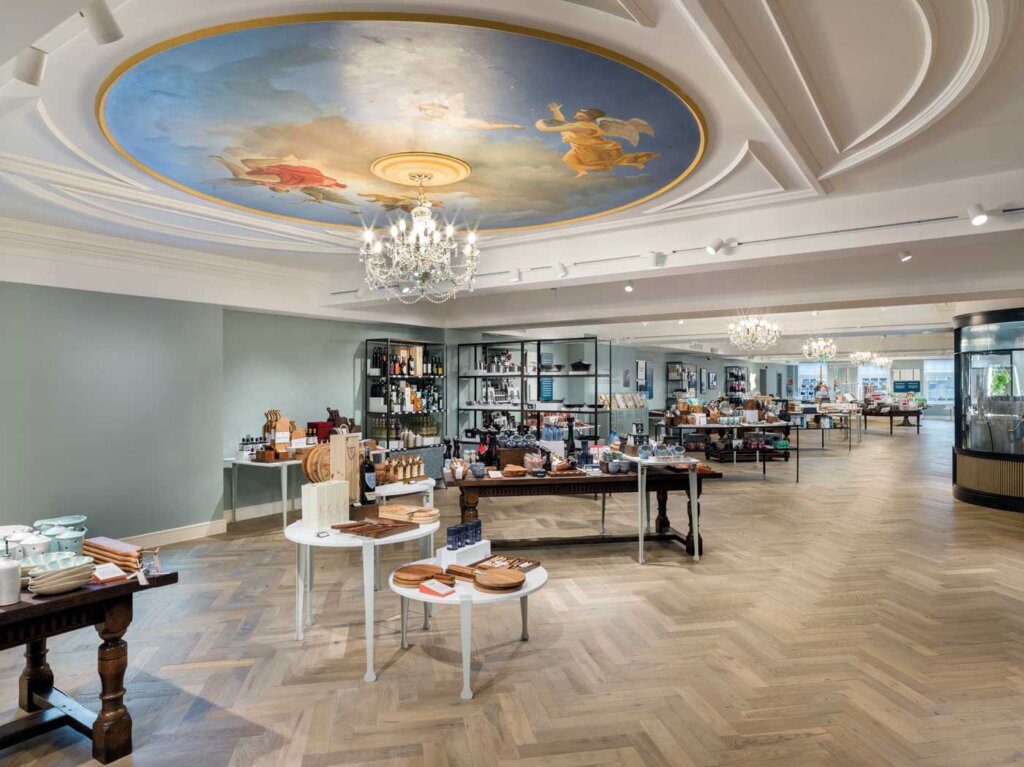
Fortnum & Mason, established in 1707, is a quintessential British institution, renowned for its luxury goods and gourmet foods, particularly its luxury hampers which are gifted by those ‘of means’ across the globe.
Originating as a small grocery store in London’s Piccadilly, Fortnum & Mason quickly gained prominence by supplying high-quality provisions to explorers, including Sir Ernest Shackleton, Howard Carter and the 1933 Everest ascent guided by the legendary Tenzing Norgay. With a wealth of warrants to supply the Royal household, Fortum & Mason were instructed by Queen Victoria to supply beef tea to Florence Nightingale and her nurses during the Crimean War, sending supplies to Scutari (present-day Istanbul). This beef extract is still sold in Fortnum & Mason today, including in their new ‘Food & Drink Studio’.
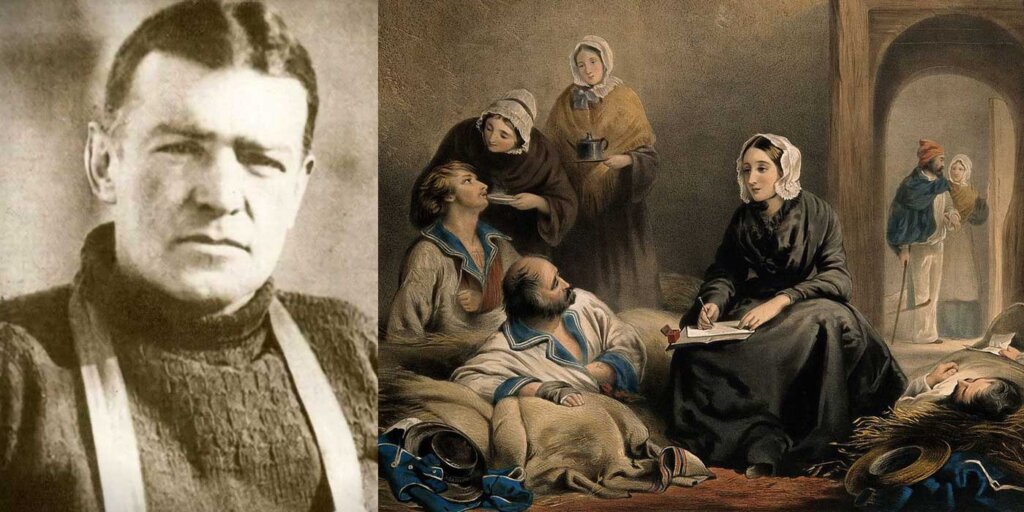
This experiential space was created, according to Fortnum & Mason CEO, Tom Athron, for “sharing our knowledge and love of food… to participate in the joys of food and drink and where playing with food is absolutely encouraged.”
The interior design program was assigned to CADA Design, experts in the Food & Beverage space. Ellie Koumparos, Senior Designer at CADA, said, “We wanted to create a juxtaposition between the heritage surroundings and future focused, ecological materials.”
Ted Todd’s Franklin, from the Woodworks Antique collection was perfectly aligned with CADA’s ambitions. A reclaimed floor, it had the sustainability credentials; an antique floor, it spoke directly to the project’s heritage status. What’s more, Ted Todd, working closely with CADA, designed a bespoke herringbone pattern which swept through the impressive space, creating a sense of movement and organic flow.
Penhaligon’s
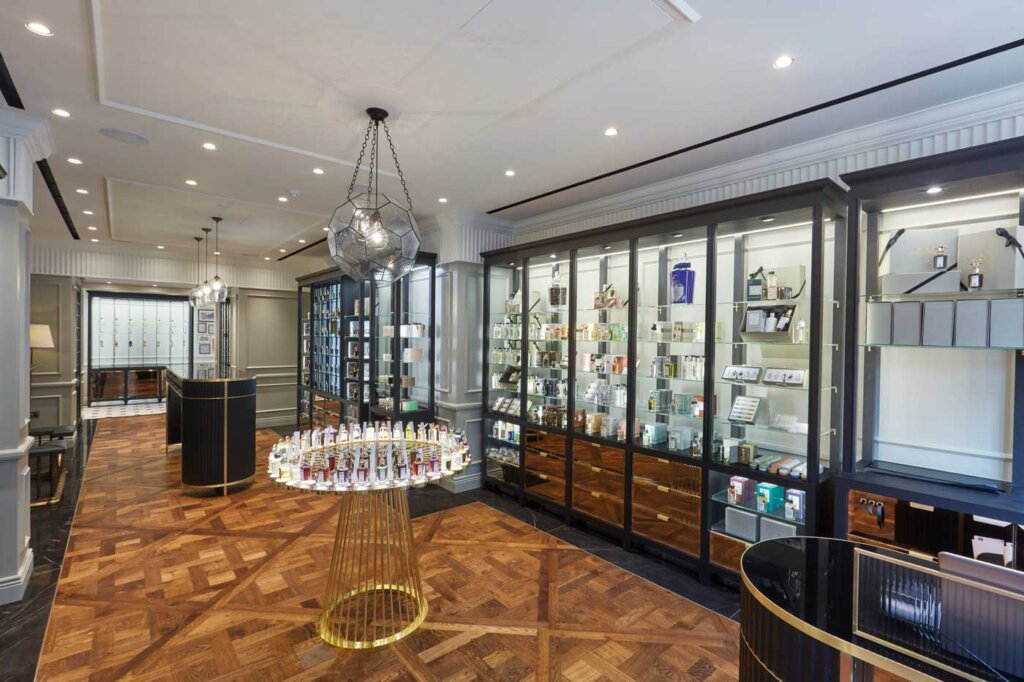
William Henry Penhaligon, a Cornish barber, established a barbershop on Jermyn Street, a fashionable area of London, in the late 1860s.
Inspired by the aromatic fumes of the neighbouring Turkish Baths, Penhaligon launched his first fragrance, Hammam Bouquet, in 1872, and shortly thereafter became the Court Barber and Perfumer to Queen Victoria. Penhaligon’s became the perfumery of choice for Oscar Wilde in the late 19th century and was even visited by the Shah of Persia. In 1902 Penhaligon’s created the iconic Blenheim Bouquet for the Duke of Marlborough, and the following year received a Royal Warrant from Queen Alexandra, the first of many.
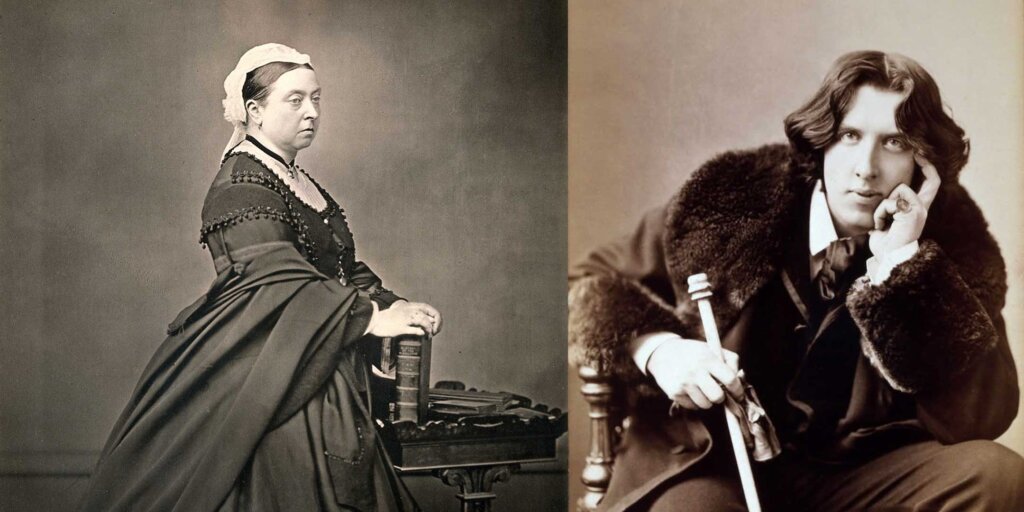
The original buildings were destroyed in the Blitz in 1941, and although the business continued, it wasn’t until 1977 that the brand was revived with the opening of a new shop in Covent Garden.
Today, Penhaligon’s is recognized as a prestigious and distinctive British perfume house with a global presence. The brand continues to release new and innovative fragrances, drawing inspiration from British history and culture, while still honouring its classic creations.
When the time came to refurbish their Wellington Street store, they wanted a look that reflected their distinguished heritage. Working with Ted Todd’s flooring specification specialists, Penhaligon’s selected Hillstar, a Woodworks floor from the Unfinished Oaks collection.
Ted Todd’s expert craftsmen transformed FSC-certified, prime grade, European Oak into classic Parquet de Versailles panels, engineered with furniture-grade birch plywood for stability. The panels possessed the perfect balance of historic charm and timeless elegance, whilst making an assured statement about the quality of the premium merchandise on display.
C. Bechstein Centre
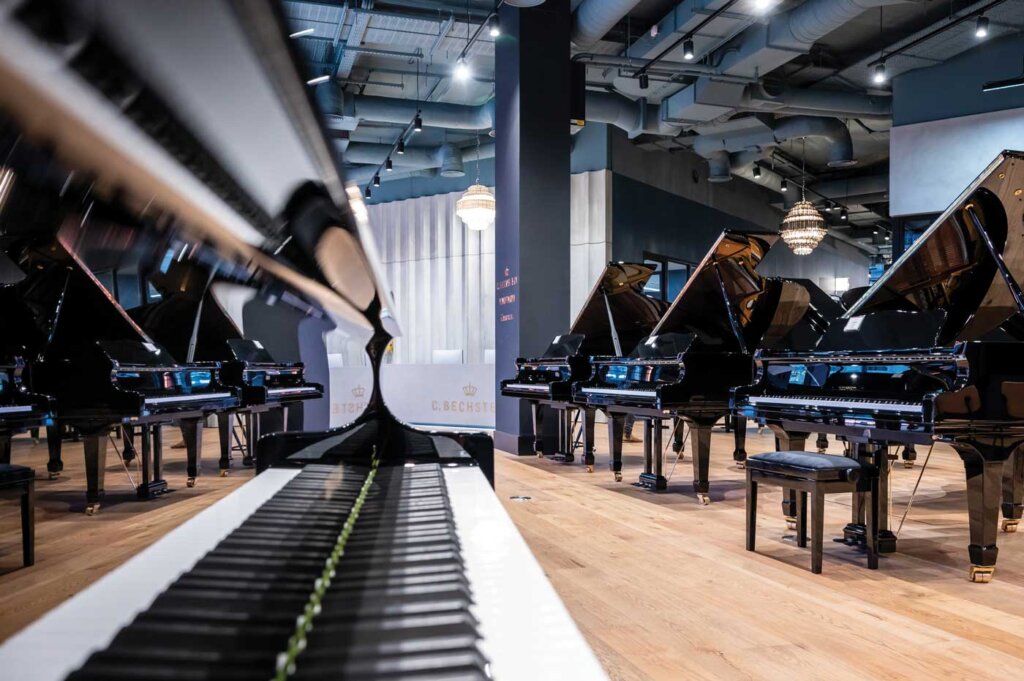
The C. Bechstein Piano Centre represents a physical manifestation of the esteemed legacy of C. Bechstein Pianoforte AG, a German piano manufacturer founded in 1853 in Berlin by Carl Bechstein. Established to create instruments capable of withstanding the demands of virtuosos such as Hungarian composer and pianist Franz Liszt, Bechstein quickly garnered a reputation for exceptional quality and craftsmanship, with the French composer and pianist Claude Debussy famously stating, “Piano music should only be written for the Bechstein”. By the late 19th and early 20th centuries, Bechstein pianos were staples in concert halls and royal households across Europe, holding royal warrants and opening showrooms in major cultural hubs like London, Paris, and St. Petersburg.
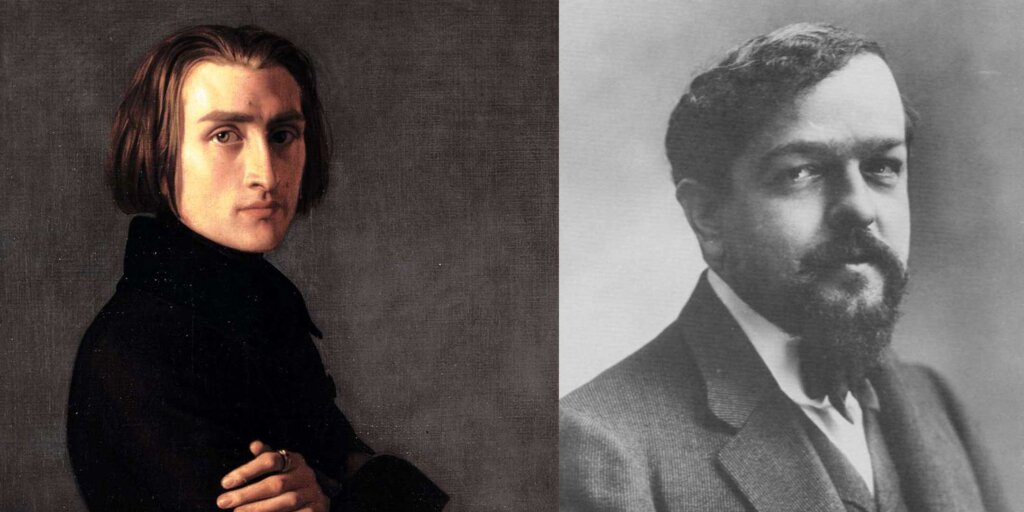
C. Bechstein Piano Centres serve as a modern extension of this heritage, offering a space where enthusiasts and professionals can experience the renowned Bechstein sound and meticulous engineering firsthand. These centres typically showcase a range of Bechstein pianos, from uprights to grand pianos, including their premium Concert series.
When the company opened their flagship centre in Manchester’s thriving Northern Quarter, it was to incorporate not just an open-plan showroom, but six purpose-built, sound-insulated practice studios and a recital space.
When creating an environment for performance, acoustics are critical, and the selection of building materials becomes an activity in which interior design overlaps with science. Wood is a fascinating material, from an acoustic perspective, as it is able to balance both sound reflection and absorption, removing unwanted noise and actively contributing to the tonal quality of a piece of music.
Estelle Buckland, an independent interior designer and spatial planner at Door Nineteen, said, “Ted Todd was chosen due to the quality and aesthetic of the product and the suitability for a piano showroom environment.”
Kennet, from Ted Todd’s Project collection was selected. A classic warm medium brown floor with distinctive grain detail, engineered using high spec nature-grade European oak, Kennet’s planks are 190mm wide and 14mm thick with a 3mm wear layer. In addition to the wear layer, a hardened oil finish was added. Hardened oil works by filling the pores of the wood. After several applications, a final coat is added which contains a light-reactive additive which is cured with UV light to form a hard, protective coating.
The finished result was a floor that was true to the brand’s aesthetics, more than capable of handling itself in a demanding commercial environment and, in its own small way, able to contribute to the quality of the sound produced by C. Bechstein’s extraordinary instruments.
Harrods
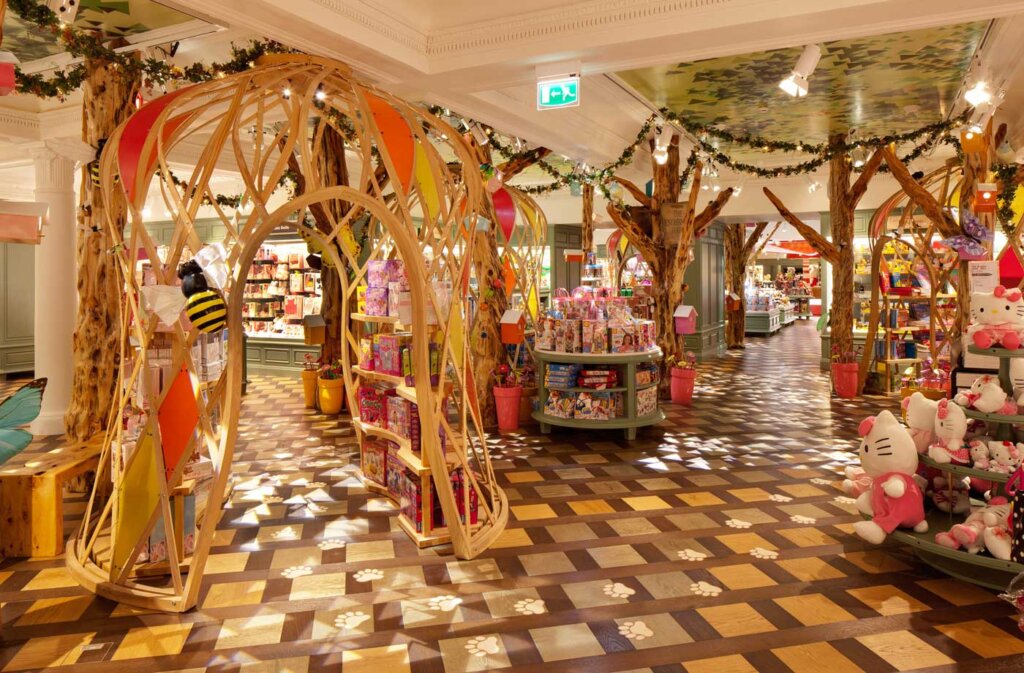
Harrods, the iconic department store in Knightsbridge, London, boasts a rich history dating back to 1849 when Charles Henry Harrod established a humble grocery shop in the East End. He later moved the business to Brompton Road, the site of the current grand emporium. Over the decades, Harrods expanded, becoming renowned for its vast array of high-quality goods and exceptional service, epitomising luxury retail.
Its reputation as a world-class shopping destination grew steadily. By the late 19th century, Harrods had become a significant landmark, attracting a wealthy clientele and earning a royal warrant, a testament to its quality and service to the Royal Family. The grand building that stands today was completed in 1905, showcasing an impressive Edwardian Baroque architectural style.
Harrods was, in 1898, the first property in England to introduce an escalator, a novelty that initially unnerved customers so much that they were offered brandy at the top to calm their nerves. Harrods has had many historic patrons, including Alfred Hitchcock, who had fresh herrings flown to him in Hollywood from the department store, and Noël Coward, who acquired an alligator from the store’s (now ethically obsolete) Animal Kingdom. Today, Harrods remains a symbol of luxury and a major tourist attraction, drawing millions of visitors annually to experience its unique and opulent atmosphere.

When Ted Todd were asked to provide a variety of floors across the store, they were conscious of the challenge and the weight of responsibility. However, it was the floor for the internationally famous toy department that presented the biggest challenge, because here they needed to create something that respected the great heritage of this historic retailer but, at the same time, it needed to be whimsical. Consider the fact that in 1921, A.A. Milne bought a teddy bear from Harrods for his son Christopher Robin. This bear was named Edward and later Winnie, becoming the inspiration for the beloved Winnie-the-Pooh character. Even in the toy department, the echoes of history can be heard!
Working with the Harrods team, the decision was made that the floor would be a homage to the yellow brick road from The Wizard of Oz. Ted Todd’s Liquorice floor, from the Create collection, was selected. Liquorice is a dark brown floor with a rich tone, engineered using nature grade European oak which means there are natural knots, colour variation and sap. This was a highly complex project involving a variety of different elements to create a ladder pattern. Each board or block was lightly brushed to reveal the natural grain-detail of the oak. Using a rotating square and real metal inset squares, Ted Todd were able to create a striking yellow brick road, finished with a highly durable lacquer.
From grand heritage to contemporary vision, and from acoustic precision to playful whimsy, these four case studies underscore the profound impact of thoughtfully chosen flooring in supporting and even elevating the retail experience. More than mere surfaces, these Ted Todd and Woodworks installations, each uniquely tailored to its environment and clientele, exemplify how design at ground level can subtly yet powerfully reinforce brand identity, guide customer journeys, and ultimately contribute to the enduring success of these extraordinary retailers.
Perhaps the final word should be left to Charles Eames: “To whom does design address itself: to the greatest number, to the specialist of an enlightened matter, to a privileged social class? Design addresses itself to the need.”